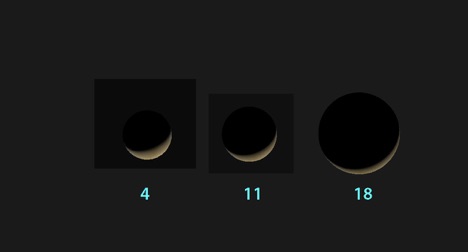Sky Report May 4 – May 10

Venus dominates this month’s Sky Reports just as it dominates the evening sky. You’ll find it in the southwest as the sky grows dark. Venus, aka “The Evening Star”, has graced our evening sky since October, but this month it makes a plunge; it’s noticeably lower night by night and it disappears from view by month’s end. You’ll last see it during the final week of May, so this is an opportunity to watch a planet change its position relatively quickly and to say good-by, for now, to a familiar friend.
Here’s what you’ll see: This week Venus is 1/3 of the way up the western sky at 9 p.m. (all times are MDT). In the middle of next week at the same time it will be 5° lower. Five degrees is about the width of 2 fingers held at arm’s length, so that’s noticeable. On the following week it’s an additional five degrees lower – and that’s quite a change. And not only is it lower, it sets 4 minutes earlier each night. So watch Venus leave the evening sky during the next three weeks.
What’s happening is that Venus is moving on an orbit that’s inside the earth’s orbit, and being closer to the sun it feels the sun’s gravity stronger than we do, so it’s moving faster than earth and it’s catching up to us. In early June it will pass us on an inside track and quickly move into the morning sky.
If you have even a small telescope you can see that Venus has changing phases, as does our moon. As Venus approaches the earth it grows in size, and at the same time it’s moving more nearly in line with the sun, so we see more of its dark side and less of its lit side and it becomes a larger and slimmer crescent. When Venus is between our earth and the sun we will be looking at the dark side only – and we won’t be able to see it. That happens in early June.
Venus is the only planet in the evening sky. Jupiter rises at about 1:30, followed a few minutes later by Saturn. The actual time that you’ll see them depends, of course, on hills and other items that block your view. The best time to look is around 5 a.m. when they’re well up in the southern sky. By then Mars has joined them, some distance to the left. Jupiter is by far the brightest object in the morning sky, other than our moon, but Saturn and Mars are only as bright as the brightest stars. Next week the moon passes first Jupiter and Saturn and then Mars – more about that in next week’s Sky Report.
Thinking of the moon, it’s full on May 7 when it rises at sunset and is visible the entire night. If you like to hike by moonlight, the few days before the 7th are best, when the moon is reasonably high as the sky grows dark, allowing you to see your way surprisingly well.
Comets are in the news. We had hoped that Comet Atlas, which was discovered only in December, would become visible to the unaided eye this month, but in mid-April it abruptly broke apart and now is fading instead of brightening — a great disappointment. But Comet Swan, discovered only six weeks ago, is heading our way and has the potential to become bright enough to see with your eyes alone in only a few weeks. Presently it’s visible only from the Southern Hemisphere, but it comes into view from Utah at the end of May. The Sky Report will keep you informed, so stay tuned.
The Sky Report is presented as a public service by the Stellar Vista Observatory, a nonprofit organization based in Kanab, Utah, which provides opportunities for people to observe, appreciate, and comprehend our starry night sky. Additional information is at www.stellarvistaobservatory.org. Send questions and comments to John@StargazingAdventures.org.






Comments are closed.